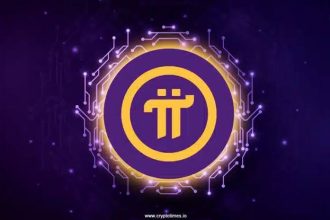The Pi Network is taking proactive measures to address potential security vulnerabilities in the face of emerging quantum computing threats. The advent of quantum computing poses a significant risk to Pi’s cryptographic security measures, which could compromise the integrity of the network and its users’ assets.
Major Concerns
- Quantum computers can potentially break certain encryption algorithms currently used by Pi Network.
- This could allow attackers to access sensitive information, compromise user accounts, and manipulate transactions.
Pi Network’s Response
- The development team is working on implementing quantum-resistant algorithms to ensure long-term security.
- Collaborations with cryptography experts and researchers are underway to stay ahead of potential threats.
- Regular security audits and testing will help identify and address vulnerabilities before they can be exploited.
“The Pi Network is committed to prioritizing security and staying ahead of emerging threats. We’re taking proactive steps to ensure our users’ assets remain safe and secure,”
Understanding Quantum Computing and Pi Network
What is Quantum Computing?
Quantum computing is a rapidly advancing field of technology that leverages the principles of quantum mechanics to process information in fundamentally different ways than classical computers. Unlike traditional computers that use bits to represent data as either 0s or 1s, quantum computers use quantum bits, or qubits, which can represent and process information as 0, 1, or both simultaneously thanks to a phenomenon known as superposition. Additionally, quantum entanglement allows qubits that are entangled to be interdependent, enabling quantum computers to solve complex problems much faster than classical computers.
Implications of Quantum Computing for Cryptography
The power of quantum computing poses a significant threat to traditional cryptographic systems. Many of the current encryption algorithms, such as RSA and ECC, rely on the computational difficulty of problems like factoring large numbers or solving discrete logarithms. Quantum computers, with their immense processing power, could potentially solve these problems quickly, rendering these encryption methods ineffective. This vulnerability necessitates the development and implementation of quantum-resistant algorithms to ensure the continued security of digital systems.
What is Pi Network?
Pi Network is a digital currency project developed by a group of Stanford graduates aimed at making cryptocurrency mining accessible to the general public. Unlike traditional cryptocurrencies that require energy-intensive mining processes, Pi Network allows users to mine Pi coins on their mobile devices without significant battery drain or energy consumption. The network operates on a consensus algorithm that relies on a trust graph built from social connections, enhancing security and scalability.
Pi Network’s Security Measures
Pi Network employs various cryptographic techniques to ensure the security of its transactions and user data. However, the rise of quantum computing presents new challenges to these security measures. Recognizing the potential threat, Pi Network is actively working on upgrading its cryptographic systems to be quantum-resistant, thereby safeguarding user assets and maintaining the integrity of the network.
Conclusion
As quantum computing continues to evolve, its implications for digital security become increasingly significant. The proactive steps taken by Pi Network to upgrade its security protocols and collaborate with experts in the field highlight its commitment to protecting its users and staying ahead of emerging technological threats. By implementing quantum-resistant algorithms and conducting regular security audits, Pi Network aims to ensure the safety and reliability of its platform for the long term.












https://t.me/tapswap_mirror_1_bot?start=r_1891914791 🎁 +2.5k Shares as a first-time gift
Tap to mine: W-Coin
TON, SOLANA, ETHEREUM
https://t.me/wcoin_tapbot?start=MTg5MTkxNDc5MQ==
Join W-Coin and get bonuses for each invited friend!🎁
Mine Pi for free on your phone!
I am sending you 1π!
Pi is a new digital currency developed by Stanford PhDs, with over 100 million members worldwide. To claim your Pi, follow this link https://minepi.com/dreamtreats and use my username (dreamtreats) as your invitation code.